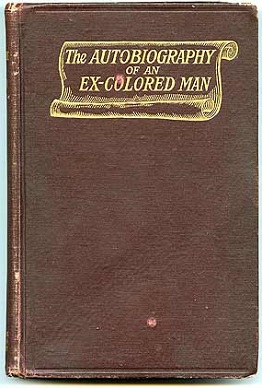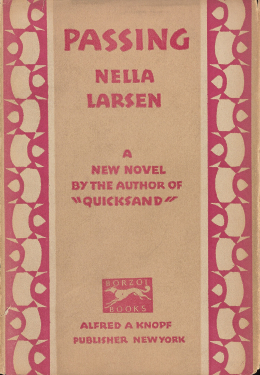United States
Passing for white

Although anti-miscegenation laws outlawing racial intermarriage existed in the North American Colonies as early as 1664, [1] there were no laws preventing or prosecuting the rape of enslaved girls and women. Rape of slaves was legal and encouraged during slavery to increase the slave population. For generations, enslaved black mothers bore mixed-race children who were deemed "mulattos", "quadroons", "octoroons", or "hexadecaroons" based on their percentage of "black blood". [2]
Although these mixed-race people were often half white or more, institutions of hypodescent and the 20th-century one drop rule in some states – particularly in the South – classified them as black and therefore, inferior, particularly after slavery became a racial caste. But there were other mixed-race people who were born to unions or marriages in colonial Virginia between free white women and African or African-American men, free, indentured, or slave, and became ancestors to many free families of color in the early decades of the United States, as documented by Paul Heinegg in his Free African Americans of Virginia, North Carolina, South Carolina, Maryland and Delaware. [3]
For some people, passing as white and using their whiteness to uplift other black people was the best way to undermine the system that relegated black people to a lower position in society. [4] These same people that were able to pass as white were sometimes known for leaving the African American community and getting an education, later to return and assist with racial uplifting. Although the reasons behind the decision to attempt to pass are deeply individual, the history of African Americans passing as white can be categorized by the following time periods: the antebellum era, post-emancipation, Reconstruction through Jim Crow, and present day. [5] : 4
Antebellum United States
During the antebellum period, passing as white was a means of escaping slavery. Once they left the plantation, escaped slaves who could pass as white found safety in their perceived whiteness. To pass as white was to pass as free. [5] : 4 However, once they gained their freedom, most escaped slaves intended to return to blackness—passing as white was a temporary disguise used to gain freedom. [5] : 28 Once they had escaped, their racial ambiguity could be a safeguard to their freedom. If an escaped slave was able to pass as white, they were less likely to be caught and returned to their plantation. If they were caught, white-passing slaves such as Jane Morrison [6] could sue for their freedom, using their white appearance as justification for emancipation. [5] : 30
Post-emancipation
Post-emancipation, passing as white was no longer a means to obtain freedom. As passing shifted from a necessity to an option, it fell out of favor in the black community. Author Charles W. Chestnutt, who was born free in Ohio as a mixed-race African American, explored circumstances for persons of color in the South after emancipation, for instance, for a formerly enslaved woman who marries a white-passing man shortly after the conclusion of Civil War. Some fictional exploration coalesced around the figure of the "tragic mulatta", a woman whose future is compromised by her being mixed race and able to pass for white.[ citation needed ]
From Reconstruction through Jim Crow
During the Reconstruction era, black people slowly gained some of the constitutional rights of which they were deprived during slavery. Although they would not secure "full" constitutional equality for another century until after passage of the Civil Rights Act of 1964 and Voting Rights Act of 1965, reconstruction promised African Americans legal equality for the first time. Abolishing slavery did not abolish racism. During Reconstruction whites tried to enforce white supremacy, in part through the rise of Ku Klux Klan chapters, rifle clubs and later paramilitary insurgent groups such as the Red Shirts. [7]
Passing was used by some African Americans to evade segregation. Those who were able to pass as white often engaged in tactical passing or passing as white in order to get a job, go to school, or to travel. [5] : 29 Outside these situations, "tactical passers" still lived as black people, and for this reason, tactical passing is also referred to as "9 to 5 passing." [5] : 29 The writer and literary critic Anatole Broyard saw his father pass in order to get work after his Louisiana Creole family moved north to Brooklyn before World War II.
This idea of crossing the color line at different points in one's life is explored in James Weldon Johnson's Autobiography of an Ex-Colored Man. [8] But the narrator closes the novel by saying "I have sold my birthright for a mess of pottage", [9] meaning that he regrets trading in his blackness for whiteness. The idea that passing as white was a rejection of blackness was common at the time and remains so to the present time. [5] : 30
African-American people also chose to pass as whites during Jim Crow and beyond. For example, United States civil rights leader Walter Francis White conducted investigations in the South during which he passed as white to gather information on lynchings and hate crimes, and to protect himself in socially hostile environments. White, who was blond-haired, blue-eyed, and had a light complexion, was of mixed-race, mostly European ancestry. Twenty-seven of White's 32 great-great-great-grandparents were white; the other five were classified as black and had been slaves. White grew up with his parents in Atlanta in the black community and identified with it. He served as the chief executive of the National Association for the Advancement of Colored People (NAACP) from 1929 until his death in 1955.
In the 20th century, Krazy Kat comics creator George Herriman, a Louisiana Creole cartoonist born to mulatto parents, passed as white throughout his adult life.
The aforementioned 20th-century writer and critic Anatole Broyard was a Louisiana Creole who chose to pass for white in his adult life in New York City and Connecticut. He wanted to create an independent writing life and rejected being classified as a black writer. In addition, he did not identify with northern urban black people, whose experiences had been much different from his as a child in New Orleans' Creole community. He married an American woman of European descent. His wife and many of his friends knew he was partly black in ancestry. His daughter Bliss Broyard did not find out until after her father's death. In 2007, she published a memoir that traced her exploration of her father's life and family mysteries entitled One Drop: My Father's Hidden Life: A Story of Race and Family Secrets.
From 2000 to the present
Passing as white is more controversial in the 21st-century because it is frequently seen as being a rejection of blackness, family and culture. [5] : 10 [4] In August 2021, Black writer for Steven Universe Future and Craig of the Creek , Taneka Stotts, told Insider that often Black and brown characters in animation exist ambiguously, calling this a "White passing narrative...where the narrative is written in a way that it's white-passing enough to get past your executives and the powers that be." [10] Mae Catt, a queer Asian-American writer for Young Justice , added that when shows are not run or written by people of color, Black characters are "surface decoration" with racial representation going "very similarly to queer representation" as the cultural identity of characters is not shown, with an "unspoken implicit destructive bias" that their behavior is "correct," behavior that is "inevitably white." [10]
Passing as Indigenous Americans
Other persons have passed or attempted to pass as Native American or First Nations people. [11] [12] [13] These people are sometimes called Pretendians, a portmanteau of the words pretend and Indian. [14]
In the New Age and Hippie movements, non-Native people sometimes have attempted to pass as Native American or other Indigenous medicine people. The pejorative term for such people is "plastic shaman". [15]
The American actor Iron Eyes Cody, who was of Sicilian descent, developed a niche in Hollywood by playing roles of Native Americans. Initially playing Indians only in movies and television, eventually he wore his film costumes full-time and insisted he was of Cherokee and Cree descent. [16] [17]
The singer-songwriter Buffy Sainte-Marie has long said that she has Indigenous Canadian ancestry, but a 2023 investigation by CBC News concluded that she was born in the United States and is of Italian and English descent. [18]
In the visual arts and literature, other White-Americans have also attempted to pass as being indigenous. Ku Klux Klan leader and segregationist speech writer, Asa Earl Carter, attempted to reinvent himself as Cherokee author Forrest Carter, author of the novel The Education of Little Tree . [11] [19]
Jay Marks, a man of Eastern-European Jewish ancestry, adopted the pen name of Jamake Highwater about 1969, claiming to be Cherokee-Blackfeet, and published numerous books under that name. He won awards and NEA grants. [20] [21] [22]
Cromwell Ashbie Hawkins West was an African American from Rhode Island. The grandson of prominent attorney and community leader, William Ashbie Hawkins, West reinvented himself as Red Thunder Cloud and, despite only knowing "a few words of Catawba" that he had learned from books, he convinced anthropologists that he was the last fluent speaker of the Catawba language. Over objections from the Native Americans he studied, who told the academics he was not Native, West continued to work with anthropologists to publish language and cultural materials about a number of different tribes with whom he had never had contact. [23]
American-born sculptor Jimmie Durham was exposed as a non-Native man posing as a Cherokee. [24] Artist Yeffe Kimball claimed to be Osage. [25]
To try to protect Native American artists from the claims of non-Native impersonators, the Indian Arts and Crafts Act of 1990 was passed in the United States. It requires any visual artist claiming to be a Native American artist to be either an enrolled member of a state or federally recognized tribe, or for a recognized tribe to designate the artist as a tribal artisan.
In academia, due to non-tribal colleges' and universities' reliance on self-identification of tribal identity, non-Native people have sometimes passed as Native Americans. [26] Elizabeth Warren, Harvard professor and U.S. Senator, claimed Cherokee and Delaware ancestry. Her claims were rejected by the Cherokee Nation. [27]
Professor and activist Ward Churchill, who advocated for American Indian rights, claimed to be alternately Cherokee, Muscogee Creek, and Métis. [26] His claims were eventually rejected by the tribes he claimed, specifically the United Keetoowah Band of Cherokee Indians. [28] [29] [30] Churchill was fired in 2007 from the University of Colorado for academic misconduct over his research and writings. [31]
The Wall Street Journal reported on October 5, 2015, that Dartmouth College fired the director of its Native American Program, Susan Taffe Reed, "after tribal officials and alumni accused her of misrepresenting herself as an American Indian". [32] She previously taught at Dartmouth, Bowdoin College, and University of North Carolina at Chapel Hill. [33] [34]
Terry Tafoya – now going by the name Ty Nolan – a former psychology professor at Evergreen State College, passed as being Warm Springs and Taos Pueblo. The Seattle Post Intelligencer discovered that he was neither, and reported his deception. [26]
The Native American and Indigenous Studies Association's Statement on Indigenous Identity Fraud says:
If we believe in Indigenous self-determination as a value and goal, then questions of identity and integrity in its expression cannot be treated as merely a distraction from supposedly more important issues. Falsifying one’s identity or relationship to particular Indigenous peoples is an act of appropriation continuous with other forms of colonial violence. [35]
Passing as African Americans and passing as members of other races
The phenomenon which is called "reverse passing" as well as "blackfishing" or "race-shifting" has been noted to be common among successful and educated women, especially among women who are academics in university humanities departments and those women who are involved in leftist activism. [36]

Civil rights activist Rachel Dolezal, then president of the Spokane chapter of the NAACP, claimed in a February 2015 profile to have been born in a "Montana tepee" and have hunted for food with her family as a child "with bows and arrows". [37] She primarily identified as African American and had established herself as an activist in Spokane. In 2015, Dolezal's mother disputed her daughter's accounts, saying that the family's ancestry was Czech, Swedish, and German, with "faint traces" of Native American heritage. She also denied various claims made by her daughter about her life, including having lived in Africa when young, although the parents did live there for a time after Dolezal had left home. [38] Dolezal ultimately resigned from her position at the Spokane NAACP chapter.
In 2015, Vijay Chokalingam, the brother of Indian American entertainer Mindy Kaling (née Chokalingam), told CNN that he had pretended to be black years before in order to take advantage of affirmative action to be admitted into medical school. [39] The medical school issued a statement that Chokalingam's grades and scores met the criteria for acceptance at the time, and race had played no factor in his admission. [40]
John Roland Redd was an African American musician born and raised in Missouri. In the 1950s he assumed a new identity, claiming to be an Indian named Korla Pandit and fabricating a history of birth in New Delhi, India to a Brahmin priest and a French opera singer. He established a career in this exotic persona, described as an "Indian Liberace". In 2001, three years after his death, his true ethnic identity was revealed in an article by Los Angeles magazine editor R. J. Smith. [41] [42] [43]
In September 2020, after Black Latino scholars confronted her, African history professor and author Jessica Krug admitted she had been falsely passing as African American. As an activist, Krug had also been using the alias "Jessica La Bombalera". [44]
Misha Defonseca (born Monique de Wael, 1937) wrote a fraudulent autobiography where she claimed to be a Holocaust survivor, when in fact she has no Jewish descent and was born to Catholic parents. Her book, Misha: A Mémoire of the Holocaust Years , received international fame. In France, the book was titled Survivre avec les loups (Surviving with Wolves) and a French movie based on her story with the same title was released in 2007. A documentary, Misha and the Wolves , detailing the investigation into the fraud was released in 2021. The titles of both the investigative documentary and of the French translation of the autobiography and its subsequent movie adaptation mention wolves, alluding to one of Defonseca's claims that as a six-year-old child during WWII, she traveled through forests across Nazi-occupied Europe in search of her parents, with no one to help her except a pack of wild wolves. [45]










